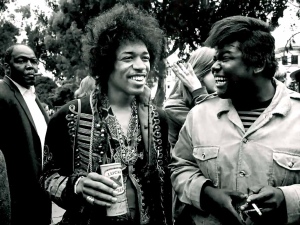
Sometimes it takes a few days for the dust to settle, for all the threads to become untangled, and for the bright lines of an event to emerge. BearHug Camp defined the silhouettes of two alternate futures.
To paraphrase a politician’s recent comment, the fundamentals of microblogging are sound. The 140 character standard message length seems safe for the moment. But one senses there’s an uncomfortable feeling about the randomness of that specific constraint and its origin in SMS. Access to APIs and the ecosystem of multiple end clients providing and discovering unique new value propositions filtered from the fire hose of the full microblogging stream is pretty stable. But there’s a fear that access may be cut off, or that the economics of API access may change radically. System stability has improved measurably, but is still below acceptable major league standards. Real time messaging and track are still on the critical list, either absent or cobbled together as a pencil sketch (everything works for a small N).
Convergence on a unified microblogging standard is key to the foundation of a larger ecosystem, what Dave Winer calls a coral reef. Currently that convergence owes its existence to the mirroring of Twitter’s feature set. The distribution of power within the political economy of the system leaves this as the only avenue for progress. An open standard that departed from Twitter wouldn’t have a leg to stand on.
The first possible future belongs to Twitter. It’s a future where scaling a real time microblogging messaging system with track is key to success. The transition of the economic model of API access from free to one with some kind of usage tax will lay the foundation for a potentially dominant business model. As long as the tax is low enough and the volume high enough, Twitter will prosper and the friction they’ve introduced won’t slow down viral growth.
Oblique Strategy: Think Garden instead of Architecture
The second possible future belongs to a distributed network of players. The big scale required by Twitter’s architecture is redistributed to multiple players with different roles and responsibilities within a networked system. It’s not Identi.ca that competes with Twitter, but an ecosystem of sites that cooperate to provide the identical feature/function set along with a fertile ground for new innovation. But there’s a fly in the ointment, there is no ecosystem. Currently there are only unscalable instances of Laconi.ca that don’t connect to each other very well. In order for there to be viral growth in the Open Microblogging ecosystem the individual nodes actually need to form a network of connections. Today they don’t. The nodes aren’t nodes so they can’t grow as a network. Many aren’t competing against One.
There are couple of things missing from this garden:
- Name resolution across Open Microblogging nodes
- Inter-node real time public and direct messaging
- Full network real time track (Aggregate XMPP Firehose)
- Multiple clients for multiple devices
To the extent that these items aren’t at the top of the Open Microblogging project priority list, Identi.ca/Laconi.ca and Open Microblogging stand on the brink of an abyss. The “growth” of disconnected nodes is the illusion of growth. In a few weeks Twitter will turn on all services, introduce a small tax and the game could well be over. The acolytes of Open Source believe they will win the war because they have a structural advantage that over time will prevail. The metaphor that was used was “flipping the iceberg.” Except for the fact that there is no structural advantage and they don’t have a critical mass of users, nor a method to virally attract them. They’re living in a separate reality, their watches have stopped and their eyes aren’t on the prize.
BearHug camp showed us all the shape of the playing field, that the game was underway, and the ball was pointedly handed to the key players. Can they keep their eyes on the prize? From the opening gun, this game is being played in sudden death. The next move is crucial.
35 Comments


